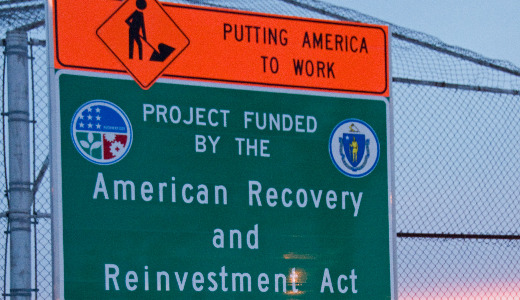
As the government released figures today showing that its anti-poverty programs are serving a record one in six Americans, demands for a second stimulus heated up.
More than 50 million Americans are now on Medicaid, a program aimed principally at the poor, up 17 percent since the recession began in December 2007. More than 40 million are on food stamps, a 50 percent increase during the same period.
The number receiving unemployment benefits has quadrupled to 10 million and there has been an 18 percent hike in the number on welfare, now up to 4.4 million since the recession began.
Federal Reserve Chairman Ben Bernanke, who has thus far refrained from entering current economic debates, said this weekend that the Fed was not in a position to fix the economy by manipulating interest rates. He said he has told Congress that additional fiscal stimulus is needed to support economic recovery.
Laura Tyson, one of President Obama’s top economic advisers, also argued strongly for a second stimulus program, declaring on Aug. 28 that “by next year, the stimulus will end, and the flip from fiscal support to fiscal contraction could shave one or two percentage points off the growth rate at a time when the unemployment rate is still well above 9 percent. Under these circumstances, the economic case for additional government spending and tax relief is compelling.”
Tyson, a professor at the Haas School of Business at the University of California, Berkeley, was chair of the Council of Economic Advisers and the National Economic Council in the Clinton administration and is a member of President Obama’s Economic Recovery Advisory Board.
According to Tyson, “The primary cause of the labor market crisis is a collapse in private demand – the same problem that bedeviled the economy in the 1930s … So there is now a substantial gap between the supply of goods and services the economy is capable of producing and the demand for them. This gap is starkly reflected by the 23 million Americans who are looking for full-time jobs and the millions more who have left the labor force because they could not find one.”
Tyson said the two types of spending with “the biggest bang for the buck” are unemployment benefits and aid to state governments. “The federal government should pledge generous financing increases for both programs through 2011,” she said.
In addition, she said that “an increase in government investment in roads, airports and other kinds of public infrastructure would be cost-effective, too, as measured by the number of jobs created per dollar of spending.”
Tyson, who made her assertions in an article in The New York Times, also noted that the American Society of Engineers has identified more than $2.2 trillion in public infrastructure needs nationwide. A 2008 study by the Congressional Budget Office found that, on strict cost-benefit grounds, it would make sense to increase annual spending on transportation projects alone by 74 percent, she noted.
Tyson said such programs are affordable. Focusing on budget cuts instead, she said, would “tip the economy back into recession or condemn it to years of faltering growth and debilitating unemployment” which “would depress tax revenue and could mean larger deficits.”
Jeff Bivens at the Economic Policy Institute said downward revisions in the Gross Domestic Product made congressional action on a second stimulus even more urgent. New data revised the GDP downward for the second quarter to 1.6 percent from an initial estimate of 2.4 percent.
“Without the stream of spending provided by the Recovery Act, the economy would have contracted outright,” said Bivens. “This is most troubling, as Recovery Act money is almost spent and will provide no boost to growth going forward. The case for more action from policymakers to support the recovery and return the job market to health is now overwhelming.”
On Aug. 30 an organization of normally conservative economists, the National Association for Business Economics, released a survey of its membership that also showed overwhelming support for job creation.
Three-quarters of the members of the group said policymakers should focus on promoting growth and job creation rather than deficit reduction. Seven out of 10 of the economists said promoting economic growth should be the policy priority at the federal level, while only 29 percent said the deficit should take precedence.
Many conservatives say they oppose more economic stimulus because, in their view, the $787 billion fiscal stimulus package passed in 2009 was a failure.
But Tyson challenged that. “It has not failed. It is working as intended,” she said. “Its spending increases and tax cuts have boosted demand and added about three million more jobs than the economy otherwise would have. Without it, the unemployment rate would be about 11.5 percent. Because about 36 percent of the money remains to be spent, more jobs will be created – about 500,000 by the end of the year.”
Photo: Eric Kilby cc 2.0










